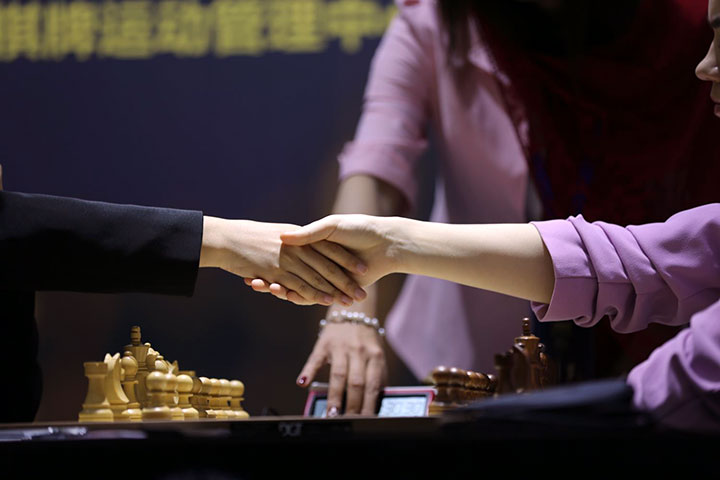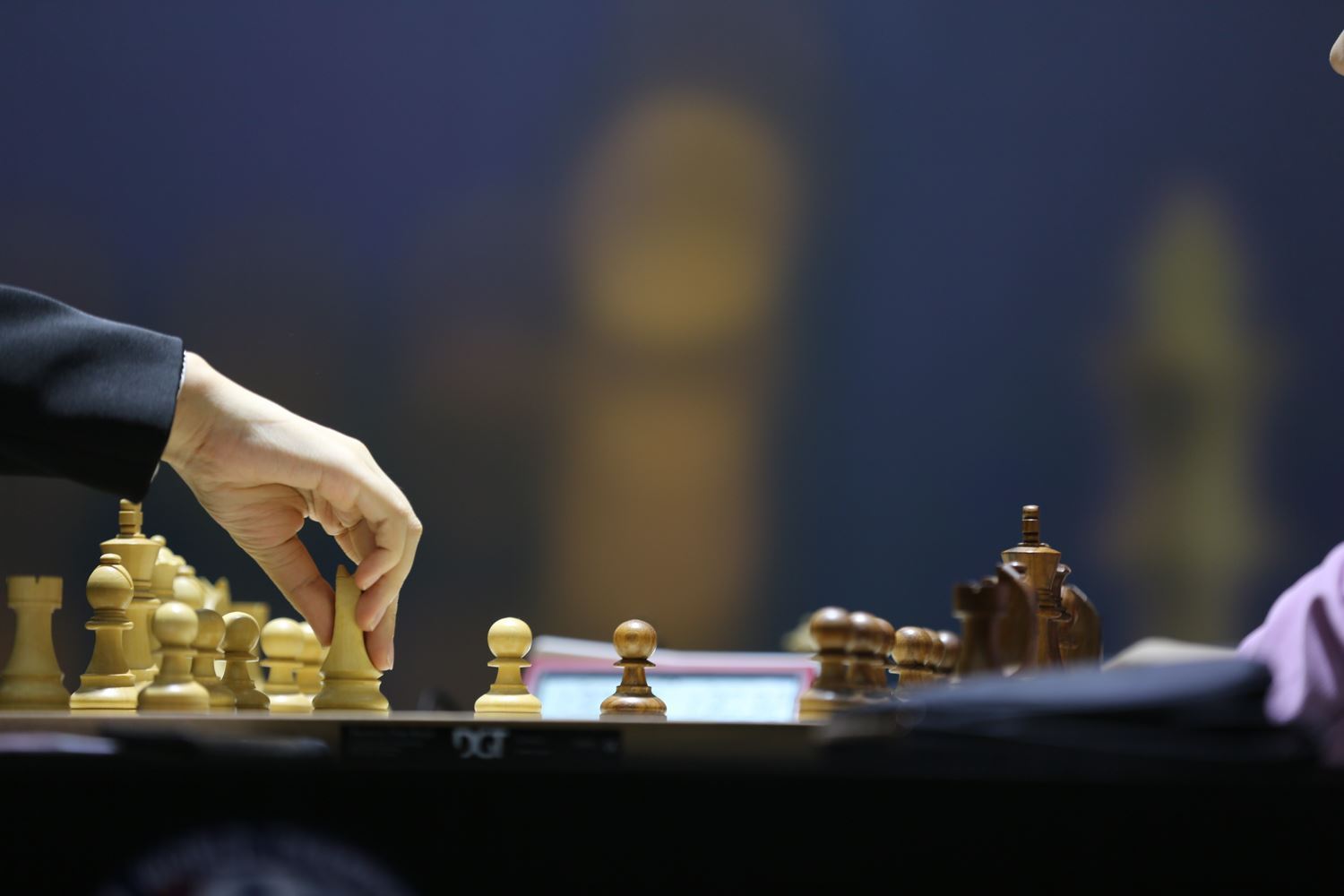


The Fédération Internationale des Échecs (FIDE) was established in 1924 and, in 1927, held the first Women’s World Championship and the Men’s Olympiad. According to Mark Weeks, who served as the Chess Guide for About.com, FIDE organized just these two events for its first two decades. Eventually, FIDE gained control of other prestigious chess events, most notably the World Chess Championship.
The present Women’s World Chess Championship cycle parallels the World Chess Championship cycle. The World Chess Championship cycle is open to both men and women, though only men have reached its final stage, a two-person match for the champion’s title. Preliminary stages include the Candidates Tournament, an eight-player double round robin where the winner becomes the challenger for a title match.

The match sports a colourful symmetric logo
Most chess tournaments are open, to all ages, all genders, and all nationalities. In the United States, the annual “U.S. Open” is one example. However, segregated championships exist, by age (junior championships), geography (state chess championships), by gender, and even by profession (U.S. Armed Forces Open Chess Championship). These segregated tournaments allow those playing to get media attention, benefit financially, and make friends with people with whom they share some similar characteristics. Separate tournaments don’t speak to whether there are advantages or disadvantages.
Likewise, separate tournaments for girls and women don’t mean that girls and women are more or less capable than boys and men at chess. However, there may be less interest in chess among girls and women compared to boys and men. Based on 2019 statistics, 14.6% of US Chess members are female, and that is a new, record-high percentage [see stories on the gender gap in chess]. Thus, logically, and in reality, a smaller base of females means fewer women than men at the top of the chess rating list, as one study found. Offering occasional female-only tournaments may make chess more attractive to girls and women, for the financial, social, and publicity reasons mentioned above.

Ju makes her move in Game 2 | Photo: Lewis Liu
The Women’s World Chess Championship match is the culmination of a two-year cycle of events. Those events financially help the current top women players to concentrate on chess exclusively, as there is prize money for each event in the cycle. If the cycle were abolished, then it would be much harder for those women players to make money from playing in chess tournaments. Women would also become relatively invisible in media stories about chess.
A four-time Women’s World Chess Champion, Hou Yifan, is ranked at #75 among men and women combined. Though she is the highest-rated woman on the list of active chess players, as #75 she likely would not qualify for the Candidates Tournament in the World Chess Championship cycle and the prize money and media attention associated with it. Sponsorship money might also be lost to the chess world, as some sponsors specifically target chess for girls and women.
However, segregated tournaments for girls and women are not universally supported. For example, Judit Polgár, the highest-rated woman of all time who at her peak in 2005 was ranked #8 in the world, wrote that she makes it a point to never separate girls and boys — nor award special prizes for girls — in the children’s tournaments that she organizes. “Meanwhile, national federations use their resources, and public subsidies are creating more female-only competitions,” Polgár wrote. “It is high time to consider the consequences of this segregation — because in the end, our goal must be that women and men compete with one another on an equal footing.”
To get to equal footing, however, separate championships may provide a leg up. The prize fund for the Women’s World Chess Championship match is 500,000 Euros [watch live]. Perhaps that prize money will enable the two competitors to invest in more chess training for themselves so that maybe, someday, they can compete also in the World Chess Championship.
This article is republished from The Conversation under a Creative Commons license. Read the original article.
| Advertising |